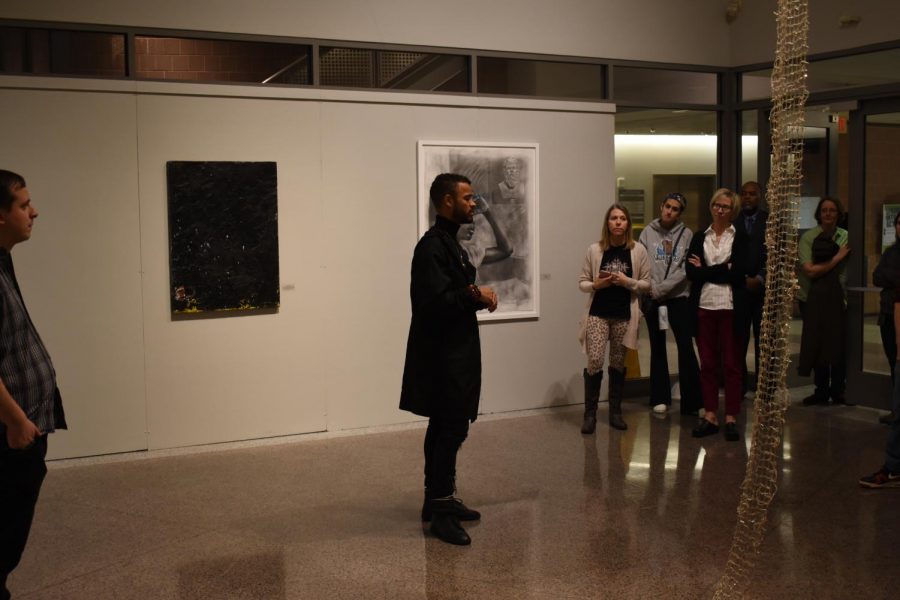AACC hosts art exhibit in honor of Black History Month
Curator Thomas James speaks to an audience of students and faculty about the art exhibit Grey Matter: A Response to Blackness, held in the Cade Gallery.
February 12, 2020
AACC hosted an art exhibit in celebration of Black History Month in the Cade Art Gallery on Wednesday.
Thomas James curated “Grey Matter: a response to blackness”, which hosted works from four artists who all focus on hardships in African-American history.
“I want people to come in here and just take a second to reflect on the work that’s being shown and the capacity in which it was created,” James said.
The four artists featured at the exhibit–Ernest Shaw, Charles Mason III, Omolara Williams McCallister, and McKinley Wallace III–had several pieces on display, in an array of different styles.
Some of the mediums included charcoal on paper, mixed media on tarp, and nails and rope.
“I’m like oh my gosh this is incredible; this is so detailed,” Samantha Kent, a second-year visual arts student said. “It’s just amazing–the technique, the style, the cross hatching–I just love it, it’s awesome.”
James added “When you look at Earnest’s work, I want you to think about the young black students in schools and school systems that may not be supporting them in the way that they need. When you look at Omolara’s work, I want you to think about past sins of this country and how black people in this country should be revered and appreciated. When you look at McKinsey’s work, I want you to think about continuous oppression and when you look at Charles’s work, I want you to think about having all of this knowledge and what that can do to or for a black person in this country.”
Jordan Lovett, a third-year transfer studies student said, “I think it’s very important actually, for everyone to see all of this. It’s all moving; it’s a very important message.”
The exhibit is open for all to see until March 5, 2020.












